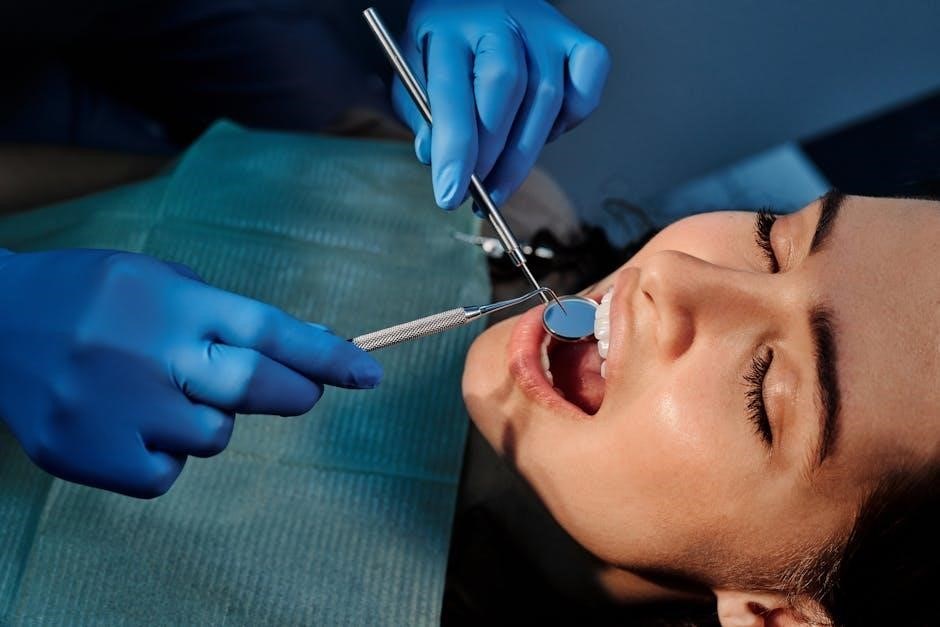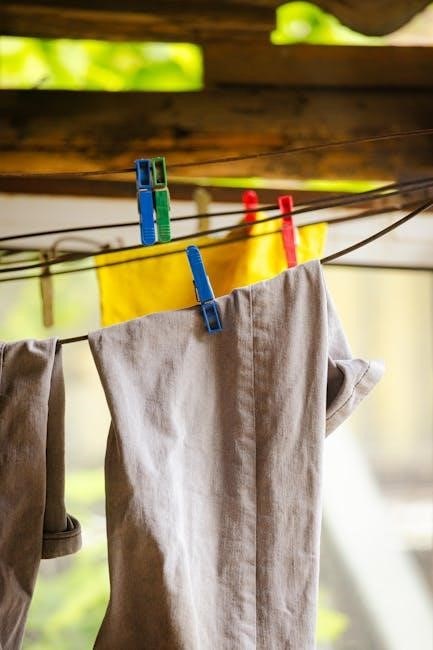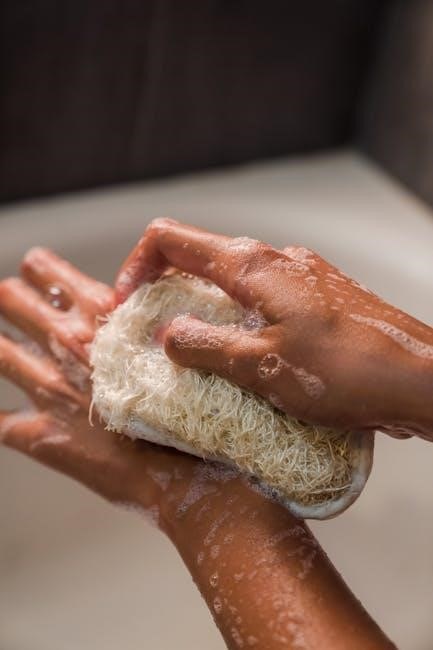Bore guide cleaning is essential for maintaining rifle accuracy and longevity; It protects the chamber and barrel from damage during cleaning, ensuring proper alignment and preventing solvent overflow․
What is a Bore Guide and Why is it Important?
A bore guide is a critical tool designed to align cleaning rods properly within a firearm’s barrel, preventing damage to the throat and chamber․ It ensures the cleaning rod moves smoothly through the barrel without rubbing against the walls, which can cause wear or damage․ By centering the rod, it helps prevent solvent overflow and ensures effective cleaning of the barrel․ This tool is essential for maintaining accuracy, as improper cleaning can lead to fouling and reduced performance․ Regular use of a bore guide protects the rifle’s action and extends its lifespan․ It is a simple yet vital component in any firearm maintenance routine, ensuring the barrel remains in optimal condition for consistent accuracy and reliability․

Tools and Materials Needed for Bore Guide Cleaning
Essential tools include cleaning rods, brushes, and patches․ Recommended materials are specialized cleaning solvents, lubricants, and protective gear to ensure safe and effective cleaning processes․
Essential Tools: Cleaning Rods, Brushes, and Patches
Cleaning rods are vital for navigating the barrel safely, while brushes (nylon or bronze) scrub away fouling․ Patches, often soaked in solvent, wipe the bore clean․ Using the right materials ensures effectiveness without damaging the barrel․ Nylon brushes are gentle yet durable, ideal for routine maintenance․ Brass jags or patch holders securely attach cleaning patches, ensuring proper solvent application․ Wet patches with solvents like No․ 9 or Montana X-Treme Copper Killer help break down residue and copper fouling․ Carbon fiber rods are lightweight and rigid, reducing the risk of bending․ These tools, when used correctly, protect the barrel and maintain accuracy․ Regular use prevents buildup and extends the rifle’s lifespan․ Always match tools to the barrel type to avoid scratches or wear․ Proper tool selection is the first step in effective bore guide cleaning․
Recommended Cleaning Solutions and Lubricants
Effective bore guide cleaning requires the right cleaning solutions and lubricants․ Solvents like No․ 9, Montana X-Treme Copper Killer, or Hoppe’s No․ 9 are popular for breaking down fouling and copper residue․ These solvents are applied to patches or brushes to scrub the barrel effectively․ For lubrication, products like CLP (Clean, Lubricate, Protect) or Barricade Rust Preventative are ideal for protecting metal surfaces from corrosion․ Degreasers, such as gun-specific cleaners, can be sprayed through the bore guide to loosen stubborn grime․ Always choose solutions compatible with your firearm’s materials to avoid damage․ Regular use of these products ensures the barrel remains clean, rust-free, and well-maintained․ Proper lubrication also reduces friction during cleaning, preventing wear on the bore and action; Avoid harsh chemicals that could harm finishes or internal components․

Step-by-Step Guide to Cleaning Your Bore Guide
Start by removing the bore guide from your rifle and inspecting it for debris․ Dip a soft brush in a solvent like No․ 9 or Montana X-Treme Copper Killer and gently scrub the bore guide to remove any residue․ Use patches soaked in the solvent to wipe down the guide, ensuring all surfaces are clean․ Once clean, apply a small amount of lubricant such as CLP or Barricade Rust Preventative to protect against corrosion․ Avoid over-lubricating to prevent attracting dirt․ Finally, allow the bore guide to dry completely before reattaching it to your rifle․ Regular cleaning and lubrication will help maintain your rifle’s accuracy and longevity․
Preparing Your Rifle for Cleaning
Before cleaning, ensure your rifle is unloaded for safety․ Remove the bolt to access the chamber and bore․ Insert the bore guide into the chamber to align the cleaning rod, preventing barrel damage․ Apply a high-quality solvent like No․ 9 or Montana X-Treme Copper Killer to the bore guide․ Use a carbon fiber cleaning rod to avoid scratching the barrel․ Insert a appropriately sized patch into the rod, ensuring compatibility with your rifle’s caliber․ Position the rod through the bore guide and advance it smoothly through the barrel․ Avoid applying excessive pressure that could damage the crown․ Clean in a well-ventilated area to avoid inhaling solvent fumes․ Follow these steps carefully to protect your rifle and ensure an effective cleaning process․
Proper Cleaning Techniques and Safety Precautions
When cleaning your bore guide, always wear gloves and eyewear to protect yourself from solvent splashes․ Use a carbon fiber rod to prevent scratching the barrel․ Insert the rod through the bore guide, ensuring it aligns properly with the chamber․ Apply a high-quality solvent like No․ 9 or Montana X-Treme Copper Killer to the rod or patches․ Avoid excessive pressure, as it can damage the barrel crown․ Make 10-15 smooth, consistent passes through the bore to remove fouling effectively․ Use nylon brushes for agitation, as bronze brushes can scratch the barrel․ After cleaning, lubricate the bore guide with a thin layer of gun oil to prevent rust․ Always work in a well-ventilated area to avoid inhaling solvent fumes․ Ensure the rifle is unloaded before cleaning to maintain safety throughout the process․

Maintenance and Storage Tips
Inspect the bore guide for wear or damage before each use․ Clean it with a mild solvent and soft brush, then store in a dry place․
How to Inspect and Maintain Your Bore Guide
Regularly inspect your bore guide for signs of wear, such as scratches or deformation․ Clean it with a mild solvent and a soft-bristled brush to remove dirt and debris․ Dry thoroughly to prevent rust․ Store the bore guide in a protective case or pouch to avoid damage․ Replace it immediately if you notice any damage to ensure proper alignment and protection of your rifle’s bore․ Regular maintenance ensures optimal performance and extends the lifespan of your bore guide․ Always handle it with care to maintain precision and effectiveness during cleaning sessions․
Troubleshooting Common Issues
Address solvent overflow by using the correct bore guide size and avoiding excessive solvent application․ Inspect cleaning rods for bends or damage, replacing them if necessary․
Addressing Solvent Overflow and Cleaning Rod Damage
Solvent overflow and cleaning rod damage are common issues during bore guide cleaning․ To prevent solvent overflow, ensure the bore guide is properly seated and use the correct amount of solvent․ Excessive solvent can seep into the action, potentially damaging sensitive components․ For cleaning rod damage, inspect rods regularly for bends or wear․ Bent rods can scrape the barrel, causing irreversible damage․ Always use high-quality, rigid cleaning rods designed for your firearm․ If a rod becomes damaged, replace it immediately to avoid further complications․ Proper alignment and gentle manipulation of the cleaning rod through the bore guide can minimize the risk of damage․ Regular maintenance and inspection are key to avoiding these common pitfalls and ensuring the longevity of your rifle․

Best Practices for Long-Term Accuracy and Performance
Regular cleaning schedules and proper lubrication are crucial for maintaining accuracy․ Use high-quality cleaning tools and solvents to prevent barrel wear and ensure consistent performance over time․
Regular Cleaning Schedules and Lubrication
Regular cleaning and lubrication are vital for maintaining your rifle’s performance and longevity․ Establish a consistent cleaning schedule, especially after frequent use or exposure to harsh conditions․ Use high-quality solvents and lubricants to prevent corrosion and wear․ Apply a thin layer of gun oil to the bore guide and related components to keep them in optimal condition․ Avoid over-lubrication, as it can attract dirt and debris․ For storage, ensure the rifle is clean and dry, with a light coat of rust-inhibiting oil․ This routine will help maintain accuracy, reduce fouling, and ensure smooth operation over time․
Avoiding Common Mistakes in Bore Guide Cleaning
When cleaning your bore guide, it’s crucial to avoid common mistakes that can damage your rifle or compromise its performance․ Avoid using excessive force, as it can bend cleaning rods or scratch the barrel․ Never skip proper alignment, as misalignment can cause solvent overflow or damage to the action․ Refrain from using inappropriate solvents or abrasive materials that may harm finishes or components․ Don’t over-lubricate, as this can attract dirt and affect accuracy․ Always inspect the bore guide for wear and clean it gently with mild solvents․ By adhering to proper techniques and avoiding these errors, you’ll ensure your rifle remains in optimal condition for years to come;
